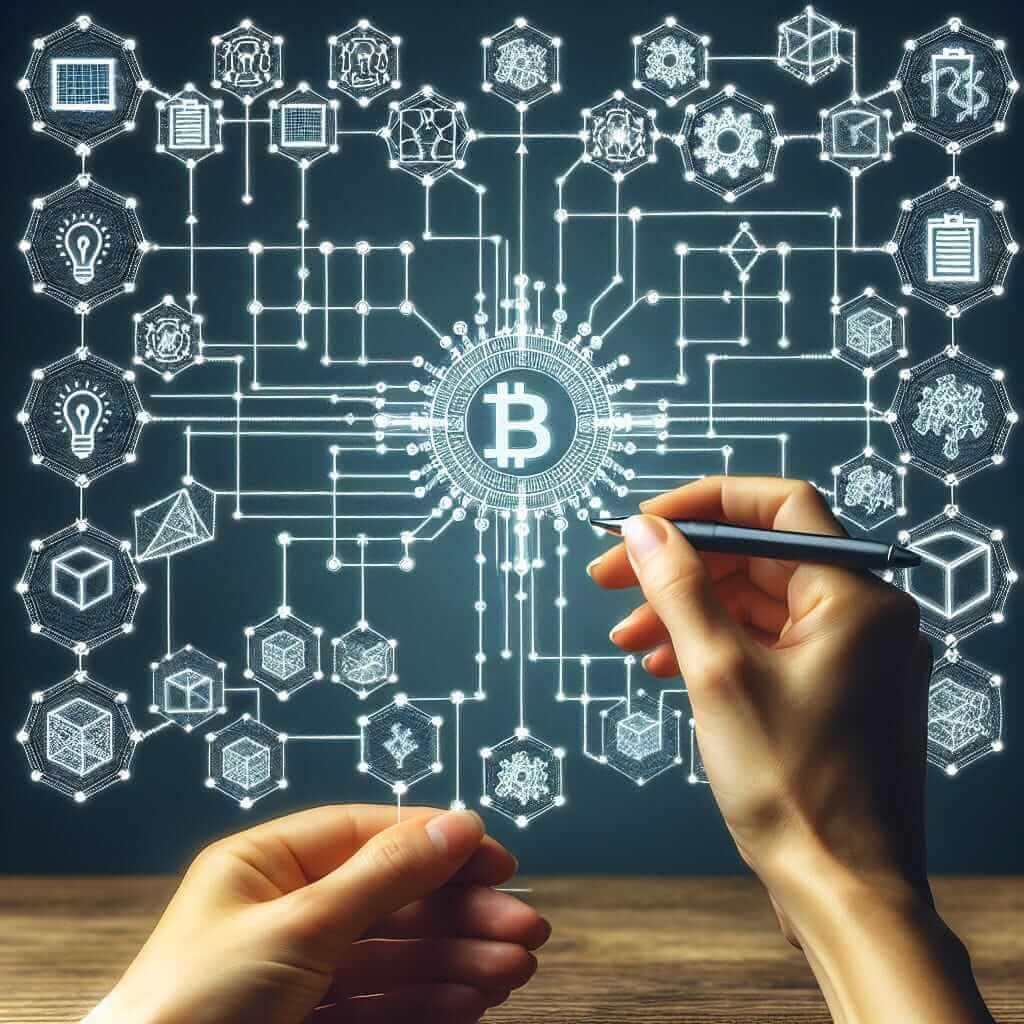The IELTS Reading test is designed to assess a candidate’s ability to understand and process academic texts in English. The test includes various passages followed by a range of question types to measure different reading skills such as comprehension, inference, and summarization. One emerging topic that has gained significant traction in recent IELTS exams is the role of blockchain technology in transforming supply chain efficiency. Given the rapid advancements and interest in this field, it is likely to appear in future IELTS tests as well.
Blockchain technology, initially designed to support cryptocurrencies, has expanded into various domains including supply chain management. Its potential to enhance transparency, traceability, and efficiency is a recurrent theme. This article will explore how blockchain technology is revolutionizing supply chain efficiency, providing a detailed IELTS reading practice passage, questions, answer keys, and useful insights to help candidates prepare effectively.
Full Practice Reading Passage
How Blockchain Technology is Transforming Supply Chain Efficiency
Blockchain technology, originally crafted for cryptocurrency transactions, has now matured into a transformative tool for supply chain management. It is hailed for offering unparalleled transparency and traceability that were once considered unattainable.
The Transparency Factor
One of the key advantages of blockchain technology in the supply chain is enhanced transparency. Traditional supply chains often suffer from a lack of visibility. Blockchain creates a decentralized, tamper-proof ledger, where every transaction is visible to all authorized participants. This transparency helps in pinpointing inefficiencies and bottlenecks, ultimately optimizing the entire supply chain process.
Improved Traceability
Traceability is another crucial factor where blockchain technology shines. In a typical supply chain, products move through many hands from production to delivery. Each transfer point is a potential risk for fraud, theft, or data tampering. Blockchain makes it easier to track a product’s origin, manufacturing process, and journey to the end consumer, thus reducing the risk of counterfeit goods entering the market.

Cost Efficiency
Implementing blockchain can significantly reduce costs associated with the supply chain. By decreasing the need for intermediaries, it saves both time and money. Smart contracts further automate compliance and settlements, minimizing human intervention and reducing the room for errors. This streamlined workflow leads to cost savings and improved profit margins.
Integration and Collaboration
Blockchain fosters better collaboration between different stakeholders. All authorized participants have access to the same information simultaneously, which improves decision-making and decreases disputes. This shared, immutable record enables a unified approach to problem-solving and boosts overall efficiency.
Challenges and Considerations
Despite its potential, implementing blockchain in the supply chain does come with challenges. The initial setup cost can be high, and there’s a need for widespread adoption for it to be truly effective. Moreover, integrating blockchain with existing systems can be technically complex and requires a skilled workforce.
In conclusion, blockchain technology holds immense promise for revolutionizing supply chain efficiency. While there are hurdles to overcome, the benefits of increased transparency, improved traceability, cost efficiency, and better collaboration make it a compelling choice for future-forward supply chains.
Practice Questions
Matching Headings
1-5: Match the heading below to the correct paragraph from the passage (A-F).
- The initial impact of blockchain technology on cryptocurrencies
- Supply chain transparency benefits
- How blockchain reduces costs
- Enhancing product traceability
- Potential challenges of implementing blockchain
Summary Completion (Choose ONE word from the passage)
Complete the summary below.
Blockchain is transforming supply chain efficiency by providing (6) __ and (7) __. Traditional supply chains lack (8) __. Blockchain’s decentralized, tamper-proof ledger helps identify (9) __. It tracks product (10) __, which minimizes fraud.
True/False/Not Given
- Blockchain technology was originally developed for supply chain management.
- Products tracked using blockchain are completely free from fraud.
- Smart contracts reduce the need for intermediaries.
Answer Key
Matching Headings
- A. The initial impact of blockchain technology on cryptocurrencies
- B. Supply chain transparency benefits
- C. How blockchain reduces costs
- D. Enhancing product traceability
- E. Potential challenges of implementing blockchain
Summary Completion
- transparency
- traceability
- visibility
- inefficiencies
- origin
True/False/Not Given
- False
- False
- True
Common Mistakes
- Matching Headings: Many candidates struggle with understanding the gist of each paragraph. To avoid this, focus on the main idea instead of getting lost in the details.
- Summary Completion: Make sure to select words directly from the passage to fill in the blanks correctly.
- True/False/Not Given: Distinguish between ‘False’ and ‘Not Given’ by checking if the statement is contradicted by the text (False) or if no relevant information is provided (Not Given).
Vocabulary
- Decentralized (adj.) /ˌdiːsɛntrəˈlaɪzd/: Not controlled or governed from one central place; distributed across multiple points.
- Immutable (adj.) /ɪˈmjuːtəbl/: Unchangeable over time or unable to be altered.
- Traceability (noun) /ˌtreɪsəˈbɪlɪti/: The ability to follow the movement or history of a product.
Grammar Focus
Relative Clauses
- Which: Used to add extra information about something previously mentioned.
Example: Blockchain, which was initially for cryptocurrencies, is now used in supply chains.
Passive Voice
- Used to highlight the action rather than the subject performing the action.
Example: Products are tracked using blockchain technology.
Tips for High IELTS Reading Scores
- Skimming and Scanning: Practice these techniques to locate information quickly.
- Practice Regularly: Regular reading of diverse materials will enhance your comprehension skills.
- Expand Your Vocabulary: A broad lexicon will help you understand and deduce the meanings of complex texts.
- Time Management: Allocate and manage your time wisely during the test to cover all questions.
By focusing on the importance of blockchain in the supply chain, this article offers a detailed practice reading passage, questions, and strategies that align with the IELT’s requirements, facilitating a comprehensive preparation experience.